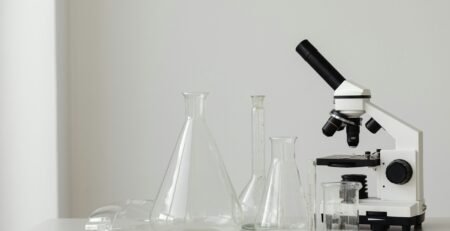1
Sep
Vacuum Filtration Setup: Buchner Flasks, Funnels, and Safety Tips
Vacuum filtration is a cornerstone technique in laboratories, used to separate solids from liquids efficiently. From chemistry classrooms to pharmaceutical quality control labs, setting up a reliable system is critical for both safety and reproducibility. With the right combination of Buchner flasks, funnels, and filtration accessories, Australian laboratories can streamline workflows while ensuring compliance with ISO and ASTM standards.
Why Use Vacuum Filtration?
Unlike gravity filtration, vacuum filtration applies reduced pressure to speed up the separation process. This method is particularly useful when filtering fine particles or large sample volumes. The result is faster processing, better clarity, and reduced solvent exposure for the operator.
LabChoice Australia supplies BORO 3.3 Buchner flasks and compatible funnels designed for durability under repeated vacuum cycles.
Key Components of a Vacuum Filtration Setup
| Component | Function | LabChoice Options |
|---|---|---|
| Buchner Flask | Thick-walled borosilicate flask with side arm for vacuum attachment | BORO 3.3 flasks, 250 mL – 2000 mL |
| Buchner Funnel | Porcelain or plastic funnel that holds the filter paper | Wide range to suit standard filter sizes |
| Filter Paper | Determines particle retention, available in varied pore sizes | LabChoice cellulose/nitrocellulose grades |
| Vacuum Source | Hand pump, water aspirator, or vacuum pump | Compatible with LabChoice side-arm flasks |
| Clamp & Stand | Provides stability during filtration | Heavy-duty stands available |
Safety and Best Practices
- Check Glassware Strength: Only use BORO 3.3 glass Buchner flasks designed for vacuum. Thin glass risks implosion.
- Use Correct Filter Paper: Match pore size to sample needs — e.g., fine retention for microbiology, medium for general chemistry.
- Secure Setup: Always use clamps and stands to prevent tipping during vacuum operation.
- Avoid Overpressure: Stay within safe vacuum limits as defined by ISO 6556 to prevent flask damage.
A biotechnology lab in Brisbane recently switched to LabChoice BORO 3.3 Buchner flasks, reporting reduced breakage and improved consistency in protein purification experiments.
FAQs
Can regular beakers be used for vacuum filtration?
No, only thick-walled BORO 3.3 Buchner flasks are safe for vacuum use.
What is the best vacuum source for small labs?
Hand pumps or water aspirators are cost-effective for teaching labs, while research labs benefit from electric vacuum pumps.
Are porcelain funnels reusable?
Yes, porcelain Buchner funnels are durable and can be autoclaved between uses.
Do I need special filter paper?
Yes, choose filter papers based on pore size and chemical compatibility with your sample.
📚 References
Standards & Specifications
- ISO 6556:2006 – Laboratory glassware — Filter flasks with side-arm for vacuum filtration. International Organization for Standardization.
https://www.iso.org/standard/43382.html - ISO 4793:1980 – Laboratory sintered (fritted) filters — General requirements. International Organization for Standardization.
https://www.iso.org/standard/10760.html - ASTM E960-21 – Standard Specification for Laboratory Glass Beakers, Filter Flasks, and Funnels. ASTM International.
https://www.astm.org/e0960-21.html - ASTM E1406-98(2015) – Standard Specification for Laboratory Glassware Jointed Funnels. ASTM International.
Academic & Safety Guides
NIST (National Institute of Standards and Technology) – Guidelines for Vacuum Systems and Filtration Safety. NIST, USA.
https://www.nist.gov
American Chemical Society (ACS) – Safe Practices for Vacuum Filtration in Chemistry Labs. ACS Laboratory Safety Resources.
https://www.acs.org/safety
CSIRO – Laboratory Safety Guidance – Use of Vacuum Filtration Equipment in Australian Research Facilities. CSIRO, Australia.
https://www.csiro.au
University of Melbourne – School of Chemistry – Undergraduate Lab Manual: Vacuum Filtration Techniques and Safety. Melbourne, Australia.

